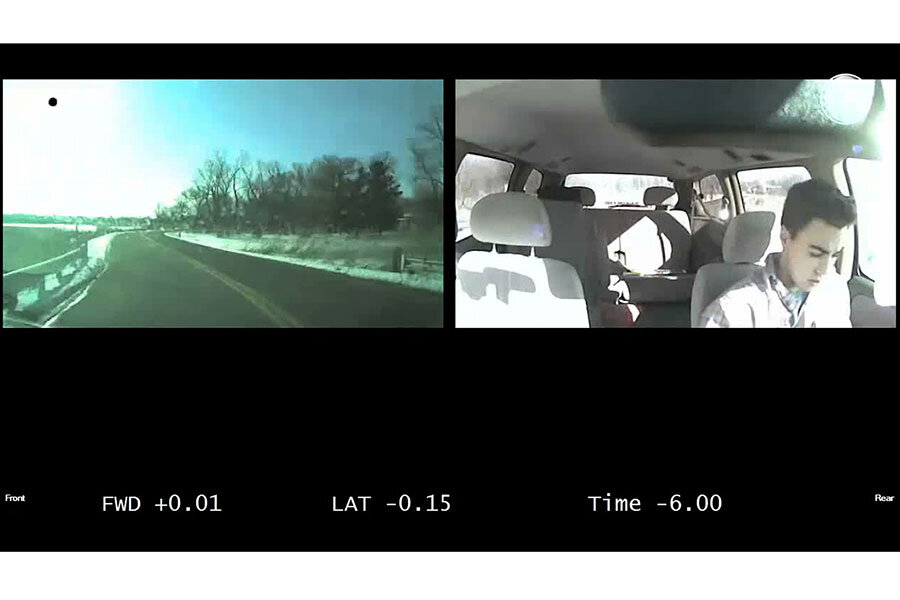Why Texas might want to hold off on that texting-while-driving ban
Loading...
Experts at the Insurance Institute for Highway Safety (IIHS) say that if the Texas House debate over a bill results in a ban on texting while driving, the number of crashes could actually go up.
“I don’t think this ban is a hard sell since states have been quick to enact these bans nationally,” says IIHS spokesman Russ Rader. “The issue is that there’s no evidence that bans like the one Texas is looking at enacting reduce crashes. In fact, our 2010 study showed that in three of four states that enacted the bans, crashes increased.”
Texas is currently among the last holdouts. The others are Arizona, Missouri, Montana, and Oklahoma, according to the Governors’ Highway Safety Association.
Four years ago, Texas Gov. Rick Perry vetoed a similar bill. Two years ago, a ban failed to pass Texas Senate, according to published reports. To date, approximately 40 cities around Texas have enacted their own bans.
"If you look at the states resisting the ban you see a lot of that conservative, Libertarian, no 'Big Brother' government interference mindset," says Governors' Safety Association (GHSA) Communications Director Kara Macek in an interview. "GHSA supports text bans, but in conjunction with handheld bans so that police can actually have a better chance at enforcement. This is a very thorny issue. What it will probably take in the end is a big cultural shift like we had with drinking and driving and wearing seat belts."
The IIHS also offers a national rundown on current laws on its website, including states that allow handheld use and texting by school bus drivers.
“Since that 2010 study, we have continued to perform observational studies," says Mr. Rader. The IIHS doesn't know yet why accidents have risen. "What may be happening here is that these bans are very well publicized and the result is that drivers in states where texting is banned will hold their devices much lower to avoid detection,” he says. “That forces the driver to take their eyes off the road for a much longer period of time and we suspect this is the reason for the increase in crashes.”
IIHS is an independent, nonprofit scientific, and educational organization whose goal is to reduce the deaths, injuries, and property damage resulting from motor vehicle crashes.
While enacting distracted driving laws may not be the answer to seeing a commensurate reduction in crashes, Rader says the answer may lie in technology.
“The solution may have to come from technology,” Rader says. “We are studying voice-activated systems and phone apps as well as crash avoidance systems being developed by auto manufacturers.”
Nevertheless, Rader warns that phone apps that dial or text for a driver can amount to a “cognitive distraction” by being difficult to use or forcing the user to work through a series of menus which may direct attention from the road to the app.
A number of studies have linked cell phone use to car crashes. A 2003 study at the University of Utah determined that drivers speaking on cell phones showed greater impairment than drivers whose blood-alcohol level was at the legal limit. What's more, the researchers found no significant differences in performance between drivers holding the cell phone and those using a hands-free device. These findings and many others have led the American Psychological Association in 2006 to declare: "Driving and cell phones don't mix."
“It’s hard to measure cognitive distractions,” Rader says. “However, no matter what the cause, at least if you have your eyes on the road you have a better shot at avoiding what’s coming at you.”
That is why “Crash avoidance systems” are of such interest to the IIHS because they involve the vehicle itself being more alert to oncoming danger than the potentially distracted driver.
“These systems are designed to bring your attention back to the road instead of the spilled coffee, text or scolding the kids at the wrong time,” Rader explains.








